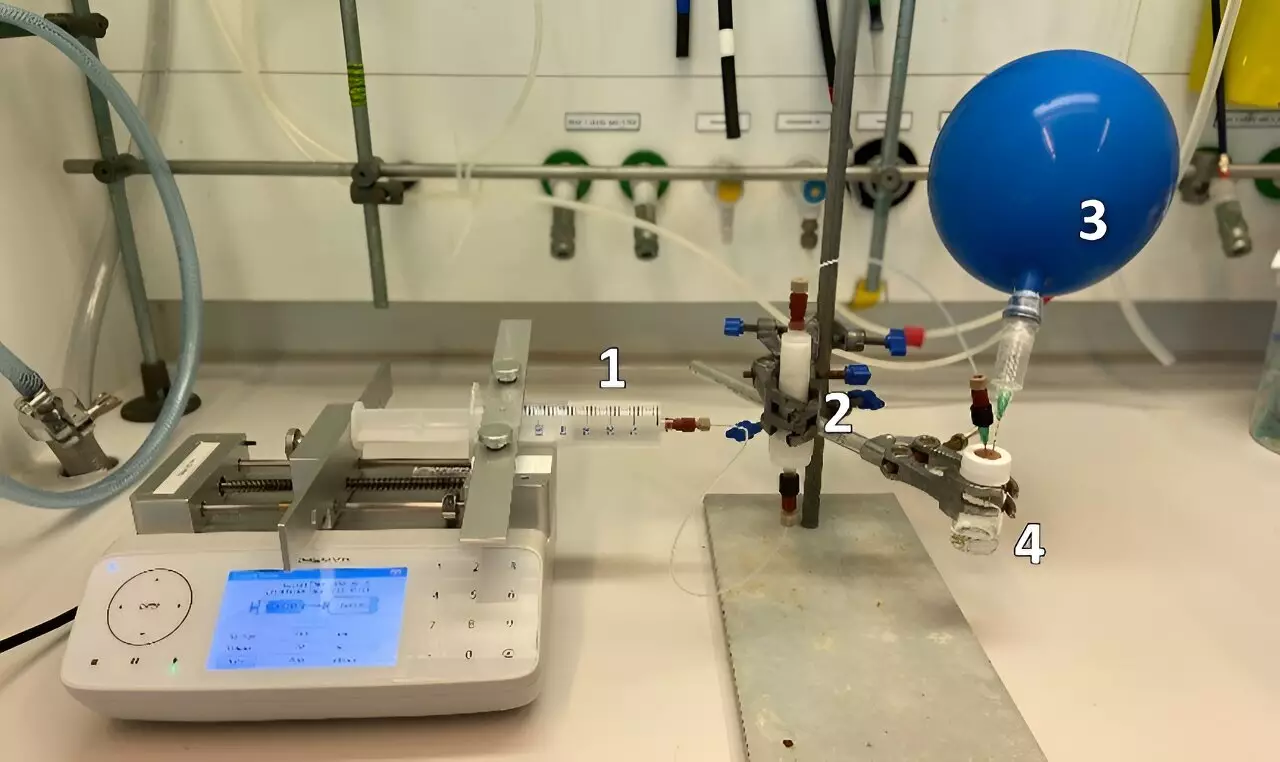Chemists at the University of Amsterdam have made a groundbreaking discovery in the field of chemical synthesis. They have developed a method that allows for the attachment of a trifluoromethyl group to molecules containing sulfur, nitrogen, or oxygen atoms. This method, published in the prestigious journal Science, does not rely on the use of PFAS reagents, making it an environmentally friendly option for the synthesis of pharmaceutical and agrochemical compounds.
Traditionally, the synthesis of molecules with a trifluoromethyl group has required the use of bespoke fluorinated reagents, many of which fall under the family of PFAS compounds. With increasing awareness of the environmental impact of PFAS compounds, there is a growing need for alternative synthesis routes. The new method developed by the Flow Chemistry group at the Van ‘t Hoff Institute for Molecular Sciences eliminates the need for PFAS compounds, offering a safer and more sustainable approach to chemical synthesis.
The trifluoromethyl group plays a crucial role in the efficacy of pharmaceutical and agrochemical compounds. It enhances hydrophobicity, increases metabolic stability, and ultimately improves the overall performance of the molecules. By providing a method to introduce the trifluoromethyl group without the use of harmful PFAS reagents, the researchers have opened up new possibilities for the development of safer and more effective drugs and pesticides.
One of the key innovations in this new synthesis method is the use of a versatile microfluidic flow module for generating reactive N–, S–, and O–CF3 anions. By utilizing a packed bed flow reactor containing cesium fluoride salt, the researchers were able to fluorinate precursors with high efficiency. This approach not only improves the overall yield of the reaction but also ensures the safety of the process by containing all intermediates within the microfluidic system.
The integration of the anion generating module with a downstream reaction module provides a streamlined platform for the derivatization of molecules bearing N–, S–, and O–CF3 motifs. This innovative approach has the potential to revolutionize the development of new pharmaceutical drugs by enhancing their properties while simultaneously improving the safety and sustainability of their production processes.
The development of this new synthesis method marks a significant step towards a greener future for the pharmaceutical and agrochemical industries. By eliminating the need for PFAS reagents and offering a safer and more sustainable approach to chemical synthesis, the researchers at the University of Amsterdam have laid the groundwork for a new era of environmentally friendly drug and pesticide development. With further research and implementation, this innovative approach has the potential to transform the way we think about chemical synthesis and its impact on the environment.


Leave a Reply